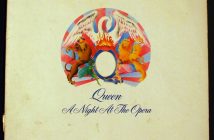It took me a little while to get my head around this idea, because the thought of female characters being removed from the merchandising for two of my favourite franchises makes me more than a little aggravated. First Black Widow was missing from several different toy sets based around the Marvel characters, including a costume range for teddy bears in Build-A-Bear. And now, Hasbro has announced a new toy range for the latest Star Wars film which, suspiciously, is missing both Daisy Ridley’s main character Rey and Captain Phasma – the female stormtrooper played by Gwendoline Christie. The blatant sexism inherent in these omissions ultimately poses an alarming question; when will this arbitrary division of children’s toys end?
The twisted logic behind this ridiculous (and potentially harmful) choice is all put down to simple economics. Toy companies feel that they have the female market all sewn up with Barbie dolls, Baby Annabelle’s, and all manner of terrifying ultra-feminine animatronic monstrosities. Similarly, they want to advertise toys like GI Joe exclusively to young boys. This separation of male and female markets is selfishly impacted to ensure that shares are not diluted in the multi-million dollar market – they want to keep girls buying “girly” toys and boys buying “boyish” toys. The apparent logic is that if boys and girls want the same toys then they will buy less – male and female siblings will be able to share, for example. So when a new franchise comes into the hands of merchandisers, executives decide early on which gender they want to market the franchise to, and plan their marketing and design with inherent sexism in mind.

The playset for this years other blockbuster cinema event, Avengers: Age of Ultron, was similarly sexist. Credit Hasbro
The decision to separate such gigantic franchises – like Marvel and Star Wars – which appeals to both male and female audiences alike, is very confusing, and plays into the problematic stereotype that only boys can be interested in a specific genre. Both Marvel Superheroes and Star Wars have traditionally been stereotyped as something that boys are interested in, and in aiming the toys exclusively at young boys, these companies are playing into archaic ideas about what boys and girls are interested in. Attend a showing of either of these films and the audience will in actuality be pretty evenly split. But toy companies want to drill into children that if they are differently gendered, they should like different things.
Dividing toys by such an arbitrary concept as gender is ridiculous, and the removal of female characters evolves this idea from being bizarre to completely indefensible. In removing any trace of female characters from a range of toys aimed at boys, toy companies are also suggesting that boys could not possibly be interested in the female characters in a film franchise – no matter how strong or central to the story they may be. In removing female characters, what these toy manufacturers are essentially saying is that boys can only look up to, and want to be like, male characters. This is not only ridiculous, but also encourages and plays into arbitrary divisions between boys and girls.
What is even more incensing is that this most recent instance of female character erasure in Hasbro’s Star Wars:The Force Awakens playset, is that one of the characters erased is the central character. Daisy Ridley’s Rey is central to the film advertising, and from what we’ve seen from limited promotion of the new film, is a central, if not the main character of the movie. The insistence that male children shouldn’t play with female characters is so prevalent that the company has removed the main character from the playset altogether! How bizarre and ridiculous is that set of circumstances?! The company would rather fundamentally change the storyline of the film in their movie-tie in playset than feature a female toy on sale for a male market.
Toy companies – and indeed marketing executives – need to realise that boys and girls can be interested in the same intellectual property, and in trying to keep the two target markets separate, they are alienating potential customers. Boys and girls can play with characters of either gender – what should be important is that the characters are as varied and interesting as possible, so that our children are right to want to be like them.




